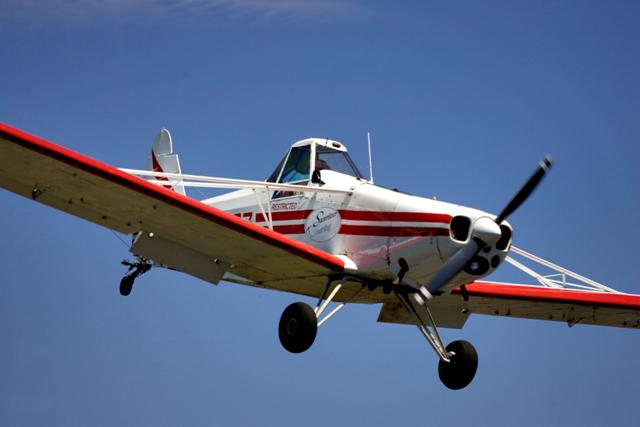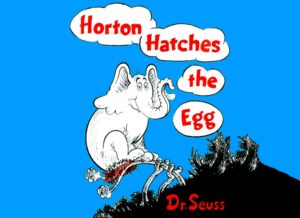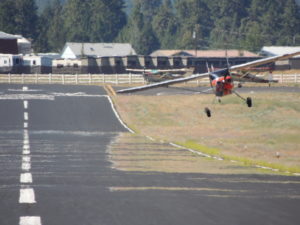From time to time, someone will ask me what my favorite airplane is. Sometimes I ask myself that question. It’s a tough one. I love Cubs and T-Crafts. I love the performance, if not the appearance, of Citabrias. Hell, I just love AIRPLANES, especially those with the tailwheel on the correct end. 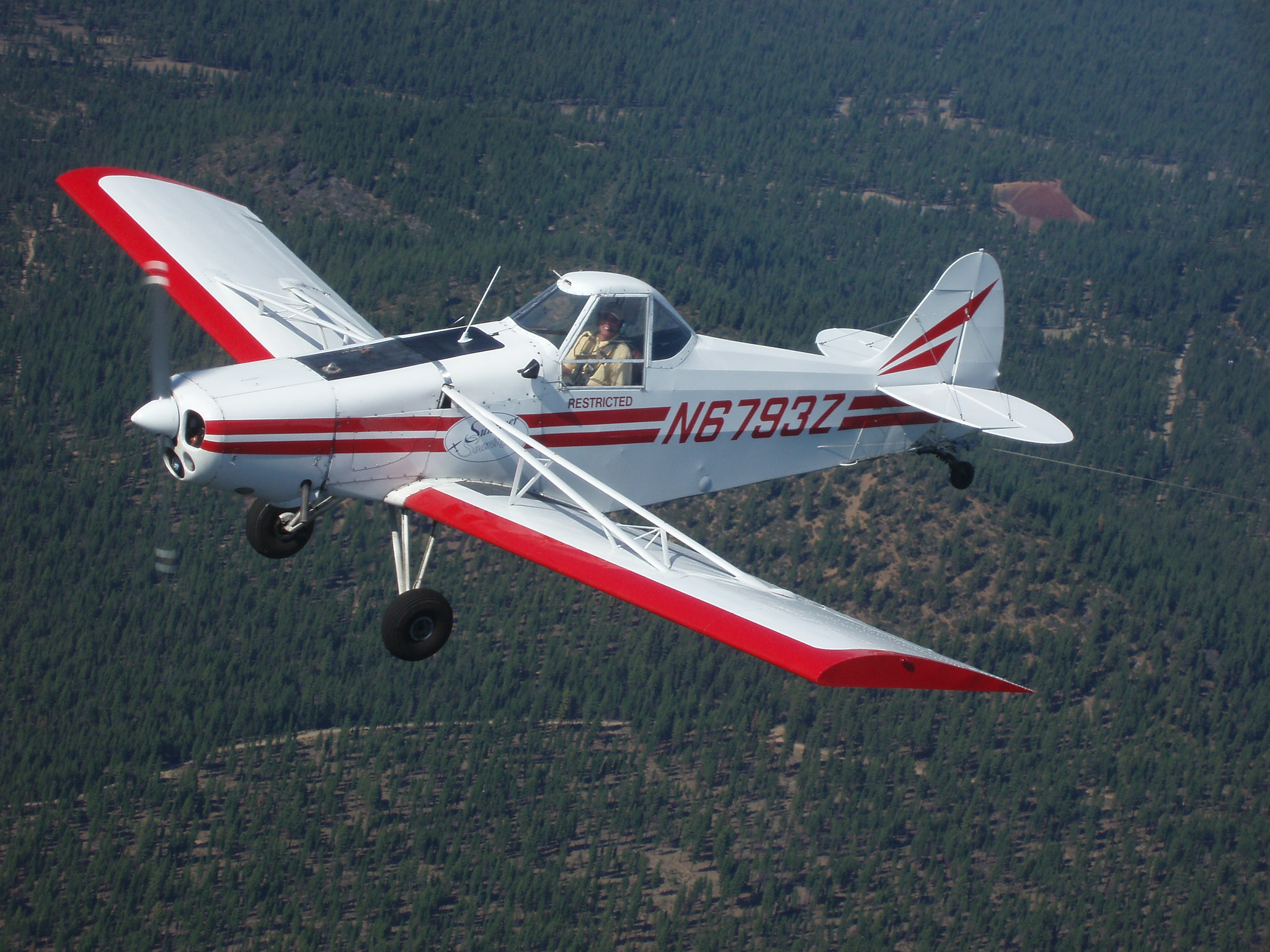 I guess that it’s human nature to wonder which airplane holds a special place in the heart of a pilot. One of my readers sent an email, asking why I’d never done an article about the PA25 Pawnee.
I guess that it’s human nature to wonder which airplane holds a special place in the heart of a pilot. One of my readers sent an email, asking why I’d never done an article about the PA25 Pawnee.
To be honest, I rarely write about any one aircraft, primarily because I’m not the technically minded type who deals with comparisons between airplanes. To me, although they have their differences, they are airplanes. To be more specific, they are TAILWHEEL airplanes and as such they tend to share a lot of characteristics, even if they have some that are unique to them. A great example is the Helio Courier. It has characteristics that make it very different from other airplanes. But it is in most ways the same. Its tailwheel version (the most common and the only one worth considering) behaves essentially the same as other tailwheel airplanes.
It’s good to remember all those things they have in common, because from time to time, a pilot may be called upon to fly an airplane for which there is only one seat. Two airplanes stand out in my mind in that regard. The first is the New Standard. Steve Oliver told me a few things about the airplane and then sent me off to “shake hands” with it and check myself out. I approached it with some trepidation, knowing that another pilot had gotten it on the ground and declared that there was something wrong with it. He declared that he was lucky to have gotten down in one piece. As Steve told me and I later found out for myself, the New Standard has a bit of a sluggish roll rate. Hmm, did I say “sluggish”? Actually, you can measure its roll rate with a calendar! It’s one of the very few airplanes in which this coordination snob will “lead with rudder” when the roll rate fails to get me banked soon enough. That led rudder will skid the airplane through the air and cause its outside wings to momentarily have a bit more lift due to airspeed. Its roll rate will then increase for a moment.
Single seat airplanes have that special aura which is the result of the fact that no one is going to fly with us. We have to hop in that seat and go “shake hands” with the airplane. The two of us will take to the air together and share a very private and special time as we find out about each other.
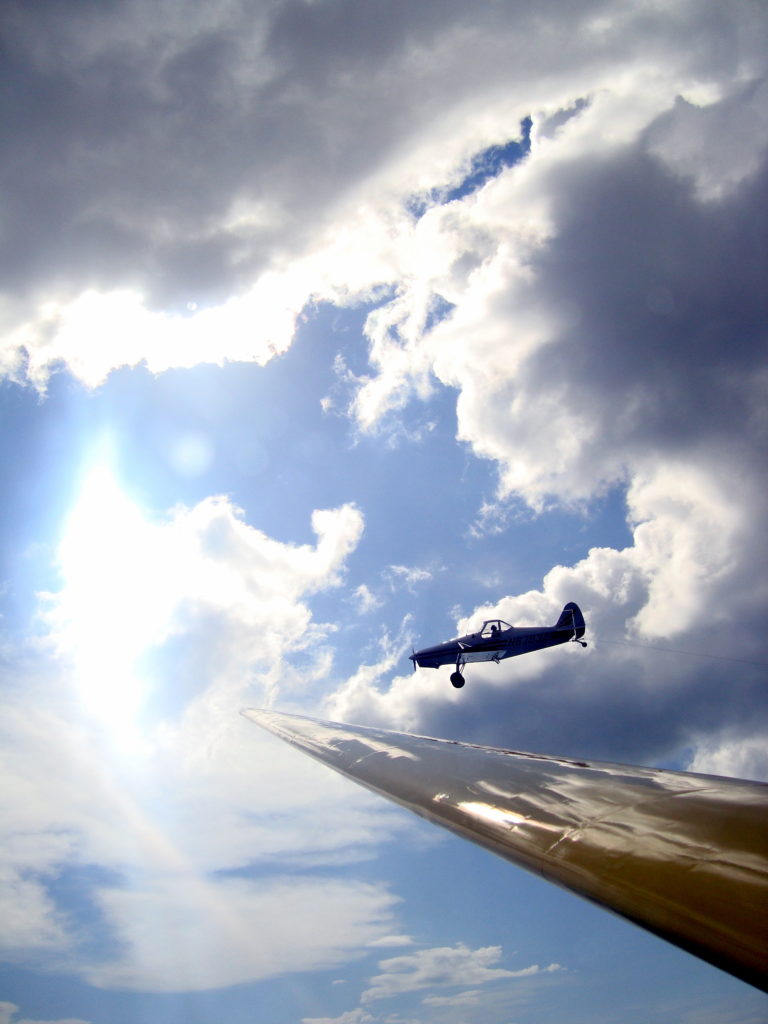
When Al Heuston casually waved his hand at his Pawnee and told me to go take it around the patch, I was delighted. I was also scared when I first plunked my butt down in that work-worn seat and surveyed the view of that long snoot for the first time. That experience is related in “Debt to an Ag Pilot”.
Its long snoot may be the first thing a flier notices about the Pawnee when he climbs in it. That snoot is LOOOOONG! It’s long because there is a hopper right in front of the pilot, then a fuel tank, then the engine. The designers of ag planes have a daunting task when they plan these things. That hopper will hold hundreds of pounds of material when full, only their own weight when empty. This huge disparity in weight will cause tremendous variation in the center of gravity. That’s why the pilot and the hopper sit so close together. They both must perch just as close to a calculated center of gravity as possible in order to enable the C.G. to remain within limits regardless of whether the plane is full or empty. So when old Fred Weick designed the Pawnee, he had some other issues. Let me inject a bit of opinion here: Weick is a designer who fascinates me because of the strong feelings I hold for two of his designs. He designed the Ercoupe. It is an aircraft that I loathe. Some of its owners are dear pals of mine. It’s their airplane I don’t like, not them. But Weick’s Pawnee is a design I’m crazy about.
When ol’ Fred packaged all that airplane out in front of the pilot, he ended up with a long snoot that would blank out any view of the runway ahead. In order to make the view more clear, he drooped that snoot. As a result, when you sit in the Pawnee with its tailwheel on the ground, the top of that fuselage forward of the windshield is virtually level with the ground. That makes it possible to see where you’re going. But when the airplane is in level flight, that snoot appears to be pointing way down. It’s an “obstacle conclusion” (as they say in the south) which causes many a pilot to want to get the nose up. Not a good idea.
With that airplane seeming to point down, the pilot approaches the runway. It’s a good thing that this long-snooted thing is so docile on the ground. The combination of the position of the gear and its design (good old Piper triangulated, bungee-equipped gear) cause the Pawnee to be an incredibly docile airplane with little tendency to want to ground-loop. But perhaps because of that drooping snoot, it has always seemed hard to land well. I flew my Pawnee virtually every day for three or four months a year. I wheeled it on and three-pointed it on. It was in the Pawnee that I practiced the shortest approaches I could fly, driving the airport managers nuts when I swooped past the front of the FBO, then banked steeply in a 180 to execute a landing in a turn as I rolled out of that 180. As I told everyone who asked, in my opinion the Pawnee is an airplane which is EASY to land, but HARD to land well. I loved my Pawnee. I loved its big ol’ O-540 engine. I loved the power with which it could hoist a 2-32 with three people into the air. I loved its visibility and the ease with which I could fly formation and some other maneuvers (I can’t be specific until the statute of limitations kicks in). I loved the smell of the remains of Malathion and who-knows-what-other chemicals lingering in its bones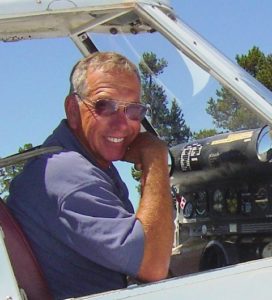 and wafting from its snoot into mine. I’ve always wished that older airplanes could talk. I’d love to listen to the stories they could tell. In the Pawnee’s case, they would be stories about untold hours of routine passes over fields, punctuated with hair-raising moments and accidents both humorous and tragic.
and wafting from its snoot into mine. I’ve always wished that older airplanes could talk. I’d love to listen to the stories they could tell. In the Pawnee’s case, they would be stories about untold hours of routine passes over fields, punctuated with hair-raising moments and accidents both humorous and tragic.
And I can’t deny that perhaps a part of its charm is the fact that the Pawnee is a working airplane. No dilettante’s plaything, the Pawnee was built to do a job. It did that job well and, as one of the most popular glider tugs, now continues to work, doing a job that ol’ Fred may not have even envisioned when he was scratching his head over the assignment of stations for that big load of poison. And while Mister Weick worked out all those issues, he also designed this plane to crash. He knew that an ag plane had another, most important job: It must protect its pilot if it crashed. And as an ag plane, it’s chances of crashing were excellent indeed. So he made that fuselage bowed out in just the right places in order to absorb energy and keep that pilot as safe as he could.
Yup, the Pawnee will always be one of my favorite airplanes, for a variety of reasons. I hope that there will be another one in my future. Because some of my happiest swooping was in the PA-25 Pawnee.
Brian

